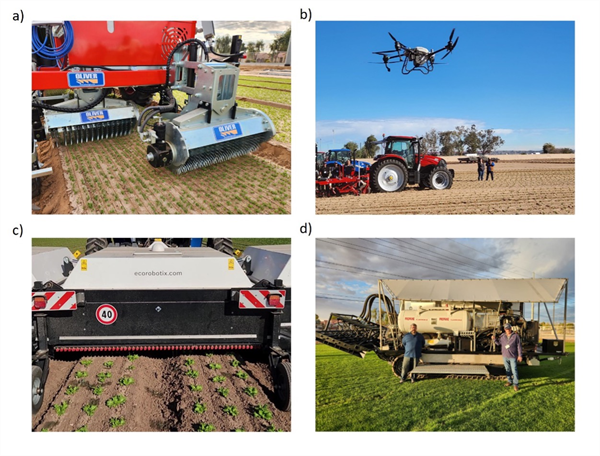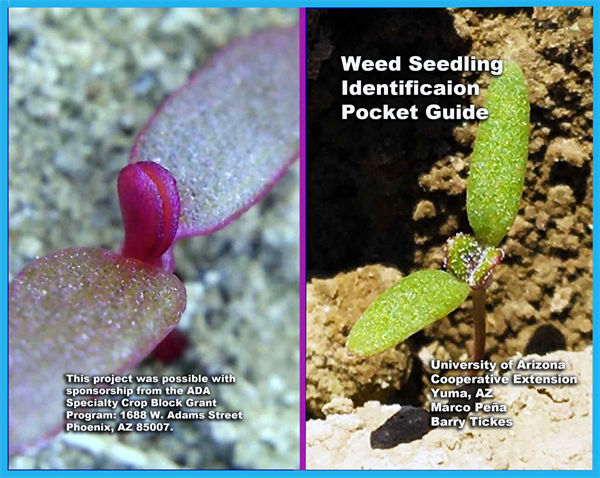Mar 6, 2024
The Arizona Meteorological Network (AZMET)
Improvements of irrigation and crop water management are always central to any discussions in the agricultural communities of the desert Southwest regarding higher crop production efficiencies. That is particularly true in these days of water shortages.
In any crop production setting the crop (plant)-soil-water relationships are essential to producing a healthy and productive crop. In desert agriculture, water is our first limiting agronomic (crop and soil) factor and there is no substitute for that.
Amid all the discussions about improvements in irrigation efficiency, the focus on plant-soil-water relations needs to be continually emphasized. The objective of any irrigation system is to provide adequate irrigation water to the soil for the benefit of the crop. Thus, it is important to understand the soil conditions and the actual crop-water needs for each irrigation event.
Every combination of a soil and a specific crop is unique, and that delicate relationship is compounded by the above ground environment the plant is growing in, the meteorological conditions. The dynamics of crop-water demand change with each plant species and it will vary daily within a given crop in response to soil conditions, stage of growth, and meteorological conditions, i.e., temperature, humidity, wind speed, solar radiation, etc. These meteorological factors must be appropriately considered for efficient irrigation management, irrespective of any type of irrigation system, i.e., flood, sprinkler, drip, etc.
In Arizona we are fortunate to have the Arizona Meteorological Network (AZMET) in place and fully operational with high quality data being collected from agricultural areas across the state on an hourly basis. At present, this data is summarized daily from 25 agricultural sites and seven urban sites across the state.
https://ag.arizona.edu/azmet/
Dr. Paul Brown, Extension Specialist in Biometeorology (retired) began the development of the AZMET system in 1985 and the full operation of the system began in January 1986. Prior to his retirement a few years ago, Dr. Brown managed and directed the AZMET system along with a robust research and Extension education program to provide numerous crop production tools that this system supports. Together, Paul Brown and Bruce Russell developed an excellent weather system that is available to us all. Dr. Jeremy Weiss now directs the AZMET program.
The meteorological data collected by AZMET include temperature (air and soil), humidity, solar radiation, wind (speed and direction), and precipitation. AZMET also provides a variety of computed variables, including heat units (degree-days), chill hours, dew point, and reference crop evapotranspiration (ETo). AZMET data are summarized in a variety of formats, including several ready-to-use summaries and comma-delimited (raw) ASCII text files that can be imported into most database and spreadsheet programs (Russell, 2011).
I have participated in numerous discussions recently regarding efforts to manage water resources in a broad sense, such as within an area or district, as well as in individual crop fields where the use of satellite-based evaporation (ET) estimates are being considered for application. In Arizona, that should not be necessary since we have AZMET stations on the ground that are well-placed in agricultural areas with high quality data available daily. The AZMET system provides direct measurements of daily atmospheric conditions that our crops are dealing with in each of the 25 locations.
With AZMET and the information directly available and accessible, in my view we should be using this system for our weather-based needs for crop management and not a remote satellite system. Even if someone insists on using satellite-based systems, it will need ground truthing and AZMET data would be essential for that.
We should be using the AZMET data and related crop management tools. This system has been developed by the University of Arizona Cooperative Extension System and it is openly available for direct access and use.
References:
Russell, B. 2011. AZMET. The Arizona Meteorological Network : A Brief Overview. University of Arizona Cooperative Extension.
https://ag.arizona.edu/azmet/azmet04.htm










